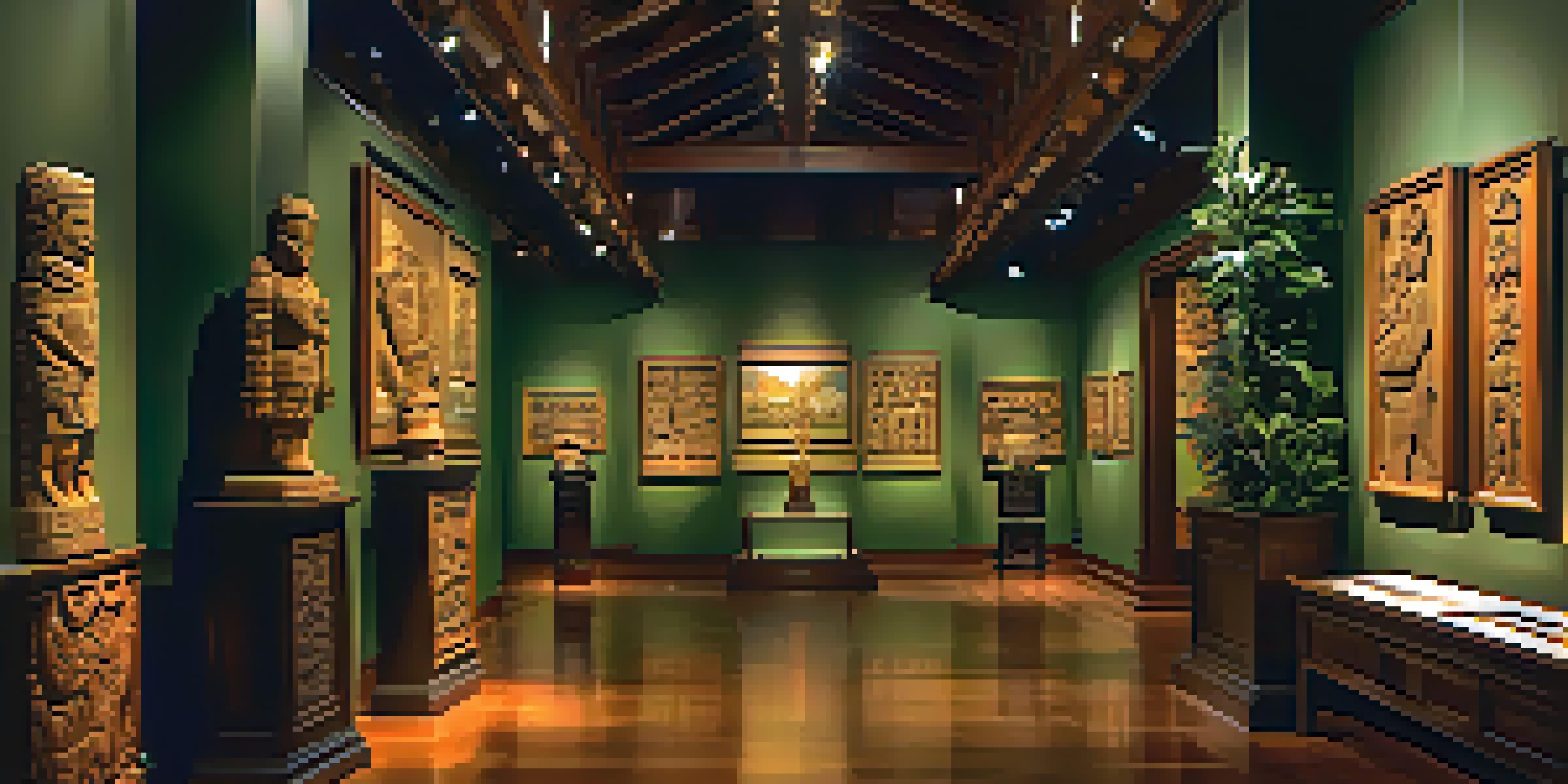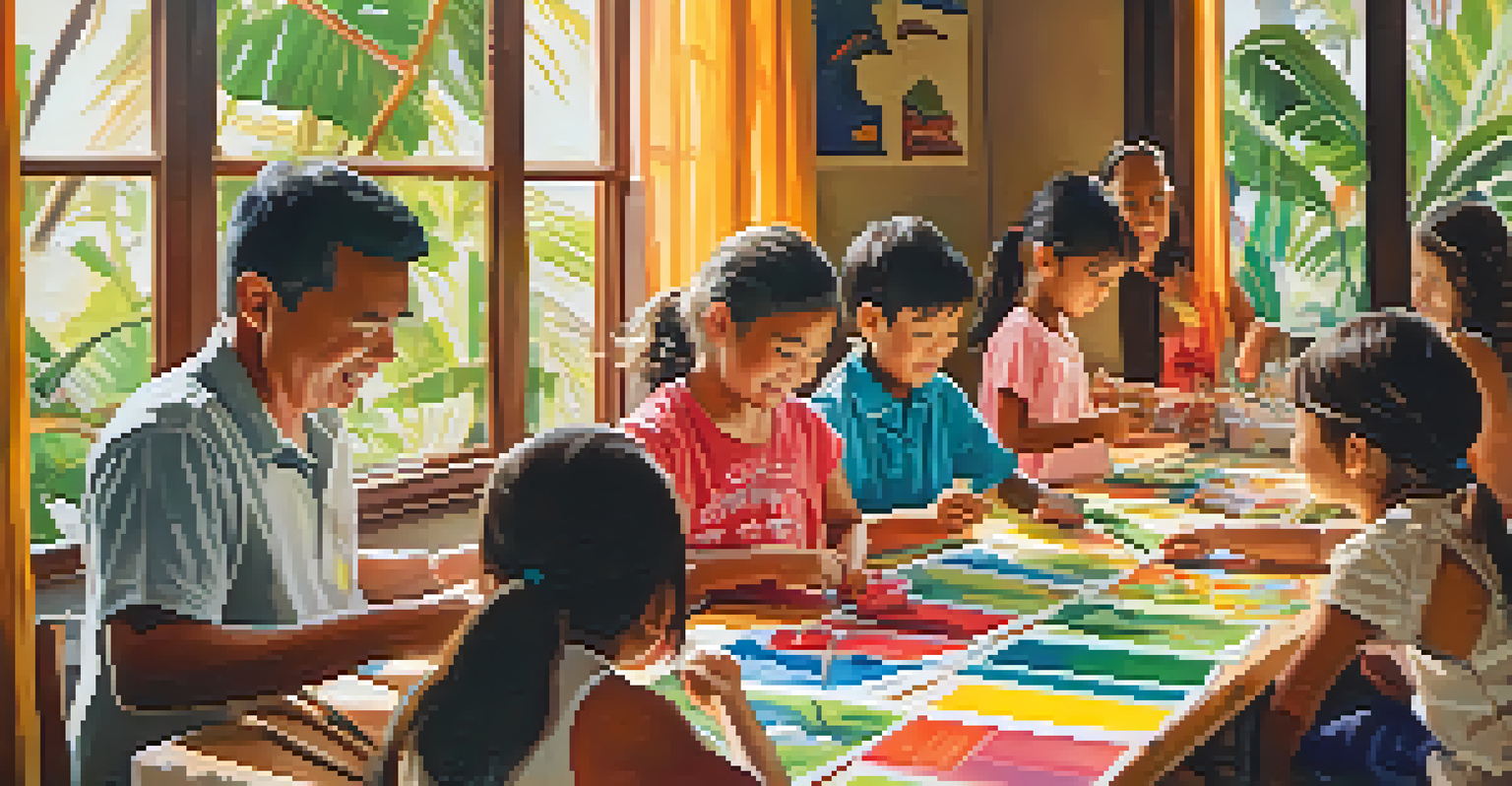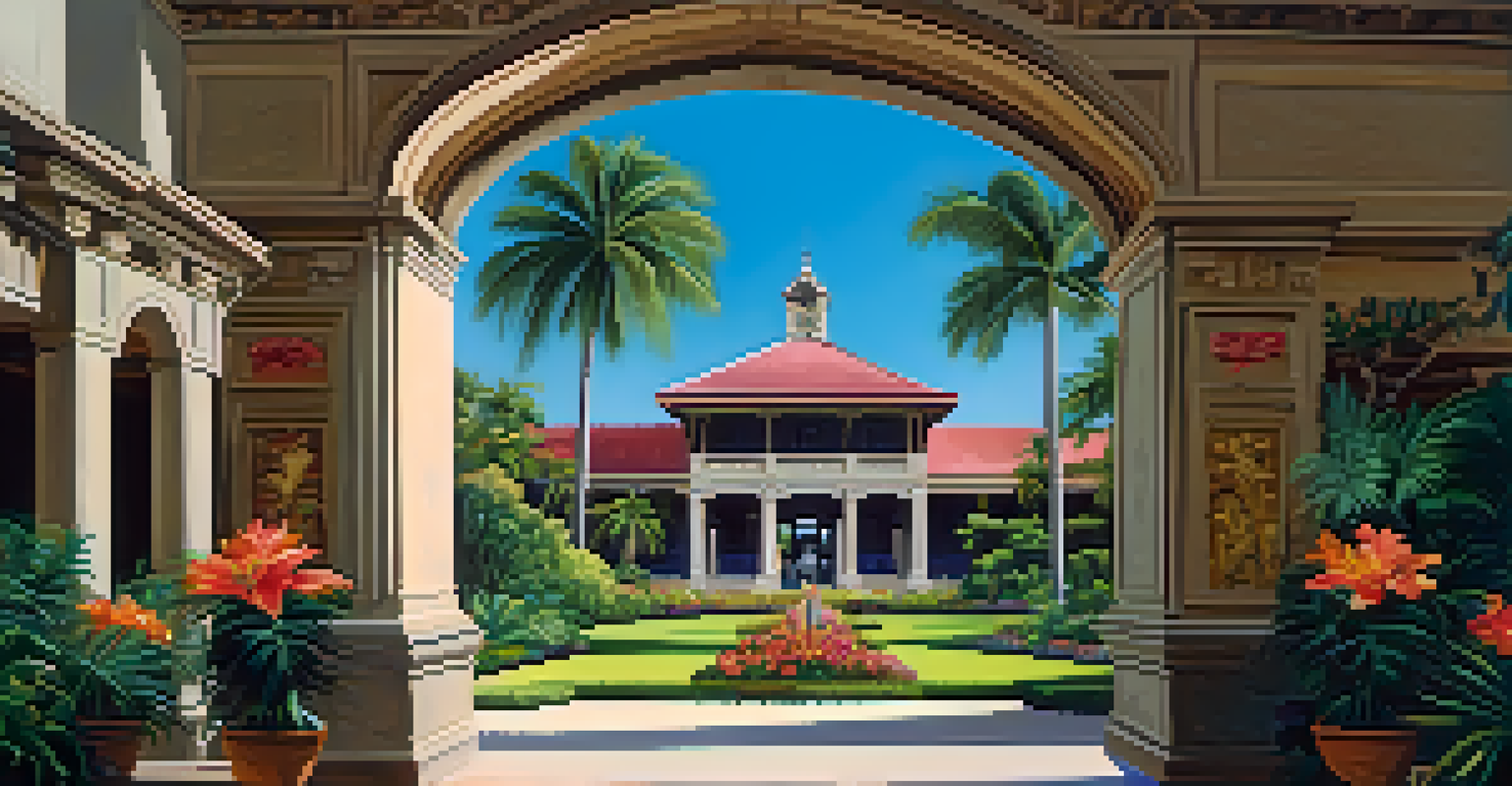Bishop Museum: Hawaii's Largest Museum for Cultural Education

An Overview of Bishop Museum's Rich History
Founded in 1889, Bishop Museum has a long-standing tradition of cultural education in Hawaii. It was established by Charles Reed Bishop in memory of his wife, Princess Bernice Pauahi Bishop, the last direct descendant of the Kamehameha dynasty. This makes the museum not just a place of learning but also a significant cultural landmark that reflects Hawaiian heritage.
Cultural heritage is the foundation upon which we build our future.
The museum's mission revolves around preserving and sharing the unique cultural and natural history of Hawaii and the Pacific. Over the years, it has grown to house an extensive collection of artifacts, manuscripts, and specimens that highlight the rich tapestry of Hawaiian and Pacific Island cultures. Visitors can explore exhibits that tell the story of these islands and their peoples.
As the largest museum in Hawaii, Bishop Museum serves as a vital resource for locals and tourists alike, making it an essential stop for anyone looking to deepen their understanding of the islands. Its commitment to cultural education fosters a sense of connection and respect for Hawaii's past and present.
Exploring the Museum's Unique Exhibits
Bishop Museum features a diverse range of exhibits that captivate visitors of all ages. From ancient Hawaiian artifacts to interactive displays about the islands' ecosystems, each exhibit offers a unique perspective on Hawaii’s rich heritage. One highlight is the Hawaiian Hall, which showcases the royal legacy and spiritual beliefs of the Hawaiian people through compelling artifacts.

Another fascinating section is the Science Adventure Center, where guests can engage with the natural sciences through hands-on activities. This area allows visitors to learn about Hawaii's unique geology, flora, and fauna in a fun and interactive manner. It's a great way for families to bond while discovering the wonders of the islands.
Cultural Education at Bishop Museum
Bishop Museum is dedicated to preserving and sharing the cultural and natural history of Hawaii, fostering respect for diverse traditions.
The museum also hosts temporary exhibits that change regularly, ensuring there's always something new to see. These exhibits often focus on contemporary issues or highlight important cultural events, making Bishop Museum a dynamic space for cultural dialogue and education.
The Importance of Cultural Education
Cultural education is at the heart of Bishop Museum's mission, as it plays a crucial role in preserving the history of Hawaii and the Pacific. By educating visitors about the significance of cultural practices, the museum fosters understanding and respect for diverse traditions. This is especially important in today's rapidly changing world, where cultural identities can easily be overlooked.
Museums are not just places to display artifacts; they are places to tell the stories of our past.
Through its programs and exhibits, Bishop Museum encourages visitors to appreciate the rich heritage of the Hawaiian Islands. This not only helps to keep traditions alive but also empowers local communities to take pride in their cultural identities. In essence, cultural education serves as a bridge connecting the past with the present.
Moreover, learning about different cultures promotes empathy and global awareness. By visiting Bishop Museum, individuals gain insights into the lives and beliefs of others, which enriches their own perspectives and fosters a greater sense of community.
Family-Friendly Programs and Activities
Bishop Museum isn't just for adults; it offers a variety of family-friendly programs designed to engage children and parents alike. From storytelling sessions to hands-on craft workshops, these activities provide fun ways for families to explore Hawaiian culture together. Such programs are tailored to make learning enjoyable for kids, creating lasting memories.
One standout program is the 'Family Sunday' event, where families can enjoy special workshops, performances, and guided tours. This initiative encourages families to spend quality time together while learning about Hawaii’s rich history and culture. It's a fantastic way to foster curiosity in young minds.
Family-Friendly Activities Available
The museum offers engaging programs for families, including workshops and events that make learning about Hawaiian culture fun for all ages.
In addition, the museum frequently hosts seasonal events that celebrate different aspects of Hawaiian culture, such as hula performances and lei-making workshops. These activities not only make learning interactive but also deepen the connection between visitors and the local community.
Visiting Bishop Museum: Essential Information
Planning a visit to Bishop Museum is easy with its convenient location in Honolulu. The museum is open daily, allowing visitors ample opportunities to explore its collections. Admission fees are reasonable, and the museum often offers discounted rates for students, seniors, and military personnel, making it accessible to a wide audience.
Before your visit, it's a good idea to check the museum's website for any special events or temporary exhibits that might be taking place. This way, you won't miss out on unique experiences that could enhance your visit. Additionally, guided tours are available, which can provide deeper insights into the exhibits and their cultural significance.
Don’t forget to stop by the museum store before you leave! It features a variety of local crafts, books, and souvenirs that reflect the cultural richness of Hawaii, allowing you to take a piece of your experience home with you.
Community Engagement and Outreach Programs
Bishop Museum is deeply committed to community engagement, offering outreach programs that extend its educational reach beyond the museum walls. These initiatives aim to connect with local schools and organizations, providing resources and support for cultural education. Such efforts help ensure that the stories of Hawaii are shared with future generations.
Through partnerships with local educators, the museum develops curriculum-based programs that align with school learning objectives. This collaboration allows students to experience Hawaiian culture in a meaningful way, fostering a sense of pride and ownership over their heritage. It's a wonderful example of how museums can play an active role in community education.
Community Engagement Initiatives
Bishop Museum actively connects with local schools and organizations through outreach programs, ensuring the stories of Hawaii are shared with future generations.
Additionally, the museum hosts public lectures and workshops that encourage community participation and dialogue. These events often feature local experts and cultural practitioners, providing a platform for sharing knowledge and experiences that reflect the diverse voices within Hawaii.
The Future of Bishop Museum
As Bishop Museum looks to the future, it remains focused on enhancing its role as a center for cultural education in Hawaii. Plans for new exhibits and educational programs are underway, aiming to adapt to the evolving needs of the community and visitors. This forward-thinking approach will ensure that the museum continues to be relevant and engaging.
Incorporating technology into the museum experience is also a priority, with initiatives aimed at creating interactive and immersive learning opportunities. Virtual reality experiences or mobile apps could soon complement traditional exhibits, making the rich heritage of Hawaii accessible to a digital audience.

Ultimately, Bishop Museum's future will be guided by its commitment to preserving and sharing the stories of the Hawaiian Islands. By embracing innovation while honoring tradition, the museum will continue to inspire curiosity and respect for the unique cultural landscape of Hawaii.